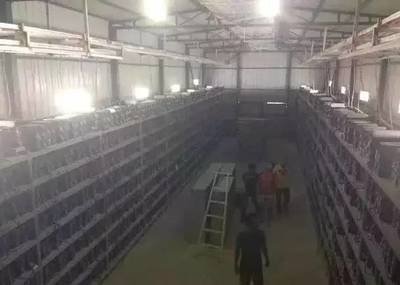In the dynamic landscape of cryptocurrency mining, sustainability has evolved from a buzzword into a strategic imperative, especially when it comes to ASIC miners—specialized hardware designed explicitly for mining operations. Bitcoin, the pioneering digital currency, continues to dominate the narrative, pushing miners and investors alike to consider not just profitability but environmental impact and energy efficiency. The surge in global awareness toward renewable energy has profoundly influenced the selection of mining rigs and processes, sparking a wave of innovation in ASIC miners that are both powerful and environmentally conscious.
ASIC miners stand apart due to their optimized architecture, which enables them to perform cryptographic calculations with unparalleled speed and efficiency. Unlike GPUs that mine multiple cryptocurrencies, ASICs are fine-tuned for specific protocols, predominantly SHA-256 used by Bitcoin. This specialization translates to lower electricity consumption per hash, elevating the efficiency ratio and reducing the carbon footprint of mining farms. Consequently, leading manufacturers are pushing the envelope to deliver machines that not only maximize hash rates but also minimize energy consumption—key metrics for sustainability.

The keystone of sustainable mining involves leveraging renewable energy sources alongside energy-efficient ASIC miners. Hosting services for mining machines have consequently evolved to integrate green energy solutions—solar panels, wind turbines, and hydroelectric power—into their infrastructure. This shift not only reduces operational costs over time but also mitigates the environmental criticism often levied against massive mining operations. Hosting providers now attract crypto enthusiasts seeking eco-friendly options, marrying profitability with responsibility.
While Bitcoin mining remains the flagship use of ASIC miners, newer altcoins like Dogecoin (DOGE) and Ethereum (ETH) navigate somewhat different terrains due to their underlying algorithms. Dogecoin, running on a Scrypt-based protocol similar to Litecoin, traditionally leans toward GPU mining, yet recent cross-mining opportunities with Litecoin have invigorated interest in more specialized mining rigs. Ethereum, on the other hand, historically dominated by GPU-based miners, is gradually moving towards a proof-of-stake consensus mechanism, reshaping the demand for mining hardware. However, miners still operate ETH rigs to capitalize on transitional periods, ensuring a diverse mining ecosystem thrives.
For miners focused on Bitcoin, the metrics of success increasingly hinge on their capacity to adapt swiftly to technological advancements and market trends. An ASIC miner’s hash rate, power consumption, and initial investment cost all play significant roles in return on investment calculations. Analysts highlight machines employing next-generation chips, featuring improved cooling systems, and integrated smart controls as exemplary models of sustainability. These miners promise extended hardware longevity and reduced failure rates, vital for maintaining stable operations in large-scale mining farms.

Mining farms themselves are undergoing transformations—no longer just warehouses lined with machines, but high-tech hubs integrating AI-driven monitoring systems, precision temperature regulation, and real-time analytics to optimize every aspect of mining operations. This convergence of technology ensures miners can dynamically allocate resources, scaling power usage based on network difficulty and energy availability. As electricity remains the largest operational cost, smarter energy management directly equates to enhanced sustainability.
In the broader exchange ecosystem, cryptocurrencies influenced by sustainable mining practices garner increasing favor among traders and institutional investors. Bitcoin’s inherent scarcity and energy-intensive mining have sparked heated debates on value versus environmental cost. Yet, with the advent of sustainable ASIC miners and green hosting models, confidence in Bitcoin’s long-term viability is rekindled. Exchanges consequently witness rising volumes for digitally scarce assets mined responsibly, reaffirming the symbiotic relationship between mining technology and market dynamics.
Furthermore, miners’ community forums and technical discourse increasingly emphasize modular rig designs that simplify upgrades and repairs—mitigating e-waste and prolonging device usability. Companies selling ASIC miners now bundle comprehensive after-sales services, including diagnostic assistance and firmware updates tailored to sustainability metrics. This paradigm shift not only elevates user experience but also pushes the entire mining industry toward greener horizons.
In conclusion, expert selections of sustainable ASIC miners are aligning intricately with high-search trends in Bitcoin mining, reflecting the market’s appetite for devices that harmonize performance with ecological stewardship. Whether operating massive mining farms or hosting individual rigs, the fusion of cutting-edge technology, renewable energy integration, and innovative management solutions lays the foundation for a future where cryptocurrency mining can thrive without compromising the planet. As the crypto sphere evolves, so too does the responsibility borne by miners—to innovate sustainably, challenge norms, and contribute to a decentralized ecosystem that respects both economic and environmental imperatives.

This article explores cutting-edge sustainable ASIC miners, blending environmental responsibility with peak Bitcoin efficiency. Expert insights spotlight innovative models trending in searches, revealing surprising tech advances and market shifts that redefine crypto mining’s future landscape.